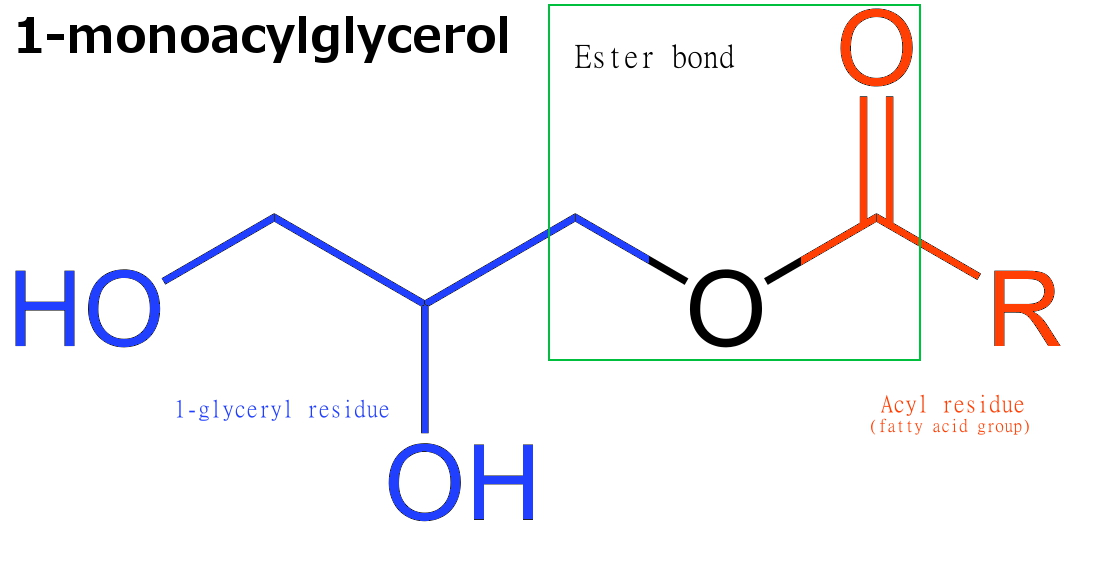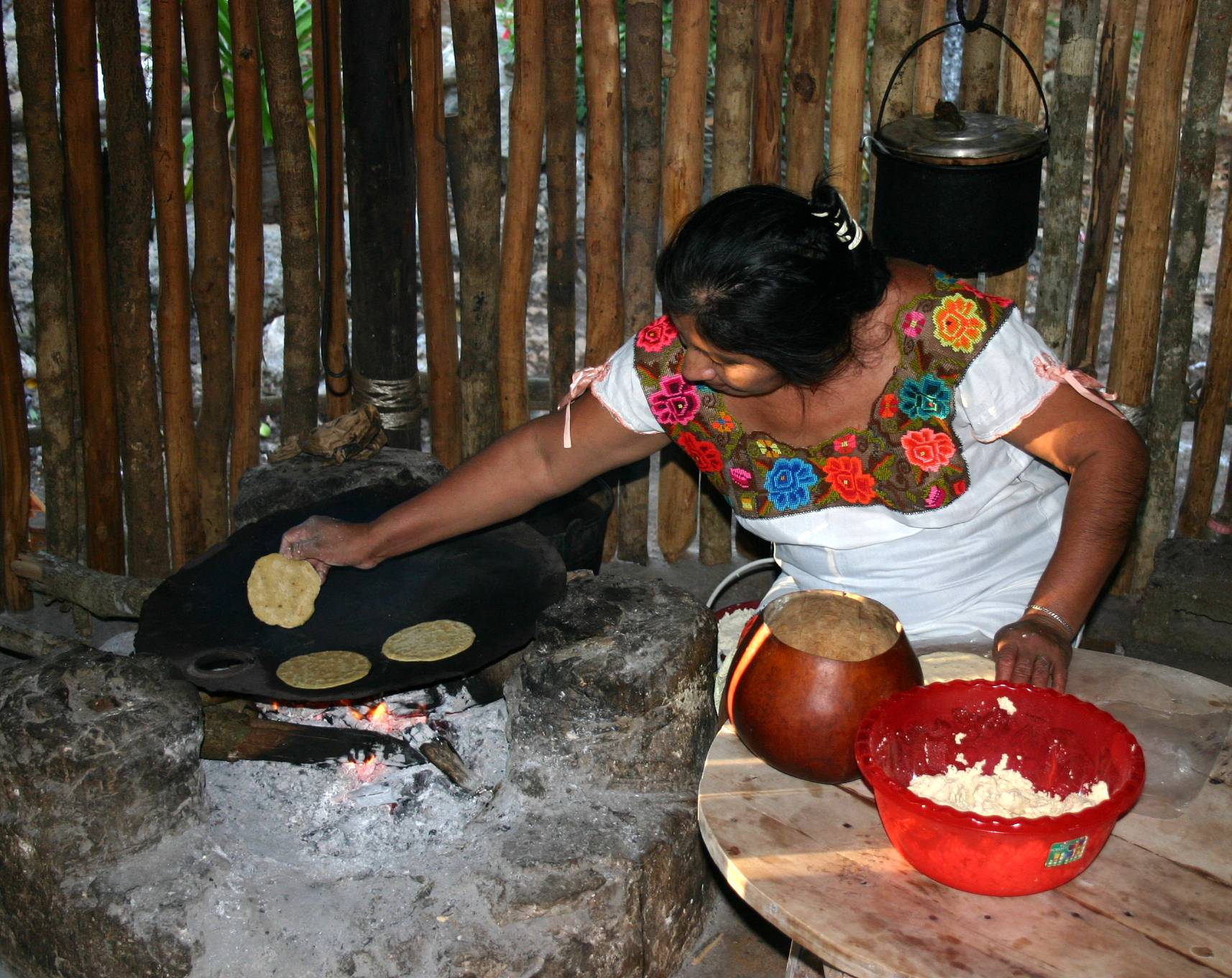|
Interesterification
In the food industry and biochemistry, interesterification (IE) is a process that rearranges the fatty acids of a fat product, typically a mixture of triglycerides. The process implies breaking and reforming the ester bonds C–O–C that connect the fatty acid chains to the glycerol hubs of the fat molecules. The reactions involve catalysts, either inorganic chemicals (chemical interesterification, CIE) or enzymes (enzymatic interesterification, EIE). This process is typically used to adjust the physical characteristics of the fat, such as melting point and plasticity (physics), plasticity, for specific uses. It can be used, for instance, to turn oils into solid or semisolid products by combining them with other solid fats. It can also be used to prevent separation of solid fractions in palm oil and lauric acid, lauric fats, or slow rancidification, or to create oils more suitable for deep frying. In contrast to hydrogenation, interesterification itself generally retains the ... [...More Info...] [...Related Items...] OR: [Wikipedia] [Google] [Baidu] |
Food Industry
The food industry is a complex, global network of diverse businesses that supplies most of the food consumed by the world's population. The food industry today has become highly diversified, with manufacturing ranging from small, traditional, family-run activities that are highly labour-intensive, to large, capital-intensive and highly mechanized industrial processes. Many food industries depend almost entirely on local agriculture, animal farms, produce, and/or fishing. It is challenging to find an inclusive way to cover all aspects of food production and sale. The UK Food Standards Agency describes it as "the whole food industry – from farming and food production, packaging and distribution, to retail and catering". The Economic Research Service of the USDA uses the term ''food system'' to describe the same thing, stating: "The U.S. food system is a complex network of farmers and the industries that link to them. Those links include makers of farm equipment and chemica ... [...More Info...] [...Related Items...] OR: [Wikipedia] [Google] [Baidu] |
Cracker (food)
A cracker is a flat, dry baked biscuit typically made with flour. Flavorings or seasonings, such as salt, herbs, seeds, or cheese, may be added to the dough or sprinkled on top before or after baking. Crackers are often branded as a nutritious and convenient way to consume a staple food or cereal grain. Crackers can be eaten on their own, but can also accompany other food items such as cheese or meat slices, fruits, dips, or soft spreads such as jam, butter, peanut butter, or mousse. Bland or mild crackers are sometimes used as a palate cleanser in food product testing or flavor testing, between samples. Crackers may also be crumbled and added to soup. The modern cracker is somewhat similar to nautical ship's biscuits, military hardtack, chacknels, and sacramental bread. Other early versions of the cracker can be found in ancient flatbreads, such as lavash, pita, matzo, flatbrød, and crispbread. Asian analogues include '' papadum'', '' senbei'' and '' num krea ... [...More Info...] [...Related Items...] OR: [Wikipedia] [Google] [Baidu] |
Monoglyceride
Monoglycerides (also: acylglycerols or monoacylglycerols) are a class of glycerides which are composed of a molecule of glycerol linked to a fatty acid via an ester bond. As glycerol contains both primary and secondary alcohol groups two different types of monoglycerides may be formed; 1-monoacylglycerols where the fatty acid is attached to a primary alcohol, or a 2-monoacylglycerols where the fatty acid is attached to the secondary alcohol. Synthesis Monoglycerides are produced both biologically and industrially. They are naturally present at very low levels (0.1-0.2%) in some seed oils such as olive oil, rapeseed oil and cottonseed oil. They are biosynthesized by the enzymatic hydrolysis of triglycerides by lipoprotein lipase and the enzymatic hydrolysis of diglycerides by diacylglycerol lipase; or as an intermediate in the alkanoylation of glycerol to form fats. Several monoglycerides are pharmacologically active (e.g. 2-oleoylglycerol, 2-arachidonoylglycerol). Industrial pro ... [...More Info...] [...Related Items...] OR: [Wikipedia] [Google] [Baidu] |
Methyl Ester
In chemistry, an ester is a compound derived from an acid (either organic or inorganic) in which the hydrogen atom (H) of at least one acidic hydroxyl group () of that acid is replaced by an organyl group (R). These compounds contain a distinctive functional group. Analogues derived from oxygen replaced by other chalcogens belong to the ester category as well. According to some authors, organyl derivatives of acidic hydrogen of other acids are esters as well (e.g. amides), but not according to the IUPAC. Glycerides are fatty acid esters of glycerol; they are important in biology, being one of the main classes of lipids and comprising the bulk of animal fats and vegetable oils. Lactones are cyclic carboxylic esters; naturally occurring lactones are mainly 5- and 6-membered ring lactones. Lactones contribute to the aroma of fruits, butter, cheese, vegetables like celery and other foods. Esters can be formed from oxoacids (e.g. esters of acetic acid, carbonic acid, sulfuric acid ... [...More Info...] [...Related Items...] OR: [Wikipedia] [Google] [Baidu] |
Soap
Soap is a salt (chemistry), salt of a fatty acid (sometimes other carboxylic acids) used for cleaning and lubricating products as well as other applications. In a domestic setting, soaps, specifically "toilet soaps", are surfactants usually used for washing, bathing, and other types of housekeeping. In industrial settings, soaps are used as thickeners, components of some lubricants, emulsifiers, and catalysts. Soaps are often produced by mixing fats and oils with a Base (chemistry), base. Humans have used soap for millennia; evidence exists for the production of soap-like materials in ancient Babylon around 2800 BC. Types Toilet soaps In a domestic setting, "soap" usually refers to what is technically called a toilet soap, used for household and personal cleaning. Toilet soaps are salts of fatty acids with the general formula (Carboxylate ion, RCO2−)M+, where M is Sodium, Na (sodium) or Potassium, K (potassium). When used for cleaning, soap solubilizes particles and g ... [...More Info...] [...Related Items...] OR: [Wikipedia] [Google] [Baidu] |
By-product
A by-product or byproduct is a secondary product derived from a production process, manufacturing process or chemical reaction; it is not the primary product or service being produced. A by-product can be useful and marketable or it can be considered waste: for example, bran, which is a byproduct of the mill (grinding), milling of wheat into refined flour, is sometimes composted or burned for disposal, but in other cases, it can be used as a nutritious ingredient in human food or animal feed. Gasoline was once a byproduct of oil refinery, oil refining that later became a desirable commercial Product (business), product as motor fuel. The plastic used in plastic shopping bags also started as a by-product of oil refining. By-products are sometimes called co-products to indicate that although they are secondary, they are desired products. For example, hides and leather may be called co-products of beef production. There is no strict distinction between by-products and co-products. ... [...More Info...] [...Related Items...] OR: [Wikipedia] [Google] [Baidu] |
Sodium Methoxide
Sodium methoxide is the simplest sodium alkoxide. With the formula , it is a white solid, which is formed by the deprotonation of methanol. It is a widely used reagent in industry and the laboratory. It is also a dangerously caustic base. Preparation and structure Sodium methoxide is prepared by treating methanol with sodium: : The reaction is so exothermic that ignition is possible. The resulting solution, which is colorless, is often used as a source of sodium methoxide, but the pure material can be isolated by evaporation followed by heating to remove residual methanol. As a solid, sodium methoxide is polymeric, with sheet-like arrays of centers, each bonded to four oxygen centers. The structure, and hence the basicity, of sodium methoxide in solution depends on the solvent. It is a significantly stronger base in DMSO where it is more fully ionized and free of hydrogen bonding. Applications Organic synthesis Sodium methoxide is a routinely used base in organic ch ... [...More Info...] [...Related Items...] OR: [Wikipedia] [Google] [Baidu] |
Trans Fat
Trans fat is a type of unsaturated fat that occurs in foods. Small amounts of trans fats occur naturally, but large amounts are found in some processed foods made with partially hydrogenated oils. Because consumption of trans fats is associated with increased risk for cardiovascular diseases, artificial trans fats are highly regulated or banned in many countries. However, they are still widely consumed in developing nations where they are associated with increased risk of diabetes, cardiovascular diseases, and death. In 2015, the US Food and Drug Administration (FDA) stated that artificial trans fats from partially hydrogenated oils were not generally recognized as safe (GRAS), and the use of such oils and trans fats should be limited or eliminated from manufactured foods. Numerous governing bodies, including the European Union, Canada, and Australia/New Zealand, followed with restrictions or bans on the use of partially hydrogenated oils and trans fats in food manufacturing. ... [...More Info...] [...Related Items...] OR: [Wikipedia] [Google] [Baidu] |
Interesterification
In the food industry and biochemistry, interesterification (IE) is a process that rearranges the fatty acids of a fat product, typically a mixture of triglycerides. The process implies breaking and reforming the ester bonds C–O–C that connect the fatty acid chains to the glycerol hubs of the fat molecules. The reactions involve catalysts, either inorganic chemicals (chemical interesterification, CIE) or enzymes (enzymatic interesterification, EIE). This process is typically used to adjust the physical characteristics of the fat, such as melting point and plasticity, for specific uses. It can be used, for instance, to turn oils into solid or semisolid products by combining them with other solid fats. It can also be used to prevent separation of solid fractions in palm oil and lauric fats, or slow rancidification, or to create oils more suitable for deep frying. In contrast to hydrogenation, interesterification itself generally retains the original distribution of fatty ac ... [...More Info...] [...Related Items...] OR: [Wikipedia] [Google] [Baidu] |
Tortilla
A tortilla (, ) is a thin, circular unleavened flatbread from Mesoamerica originally made from maize hominy meal, and now also from wheat flour. The Aztecs and other Nahuatl speakers called tortillas ''tlaxcalli'' (). First made by the indigenous peoples of Mesoamerica before colonization, tortillas are a cornerstone of Mesoamerican cuisine. Corn tortillas in Mesoamerica are known from as early as 500 BCE. Etymology The word ''tortilla'' is derived from the Spanish word ''torta'', meaning "cake," plus the diminutive -''illa''; as a result, the word means "little cake" in Spanish. Varieties Corn Tortillas made from nixtamalized maize meal (''masa de maíz'') are the oldest variety of tortilla. They originated in Mexico and Central America, and remain popular throughout the Americas. Peoples of the Oaxaca region in Mexico first made tortillas at the end of the Villa Stage (1500 to 500 BCE). Towards the end of the 19th century, the first mechanical utensils for making t ... [...More Info...] [...Related Items...] OR: [Wikipedia] [Google] [Baidu] |
Flatbread
A flatbread is bread made usually with flour; water, milk, yogurt, or other liquid; and salt, and then thoroughly rolled into flattened dough. Many flatbreads are Unleavened bread, unleavened, although some are leavened, such as pita bread. A Serving size, serving of 85g (~3 ounces) of pita bread has 234 Calorie, calories. Flatbreads range from below one millimeter to a few centimeters thick so that they can be easily eaten without being sliced. They can be baked in an oven, fried in hot oil, grilled over hot coals, cooked on a hot pan, tava, Comal (cookware), comal, or metal griddle, and eaten fresh or packaged and frozen for later use. History Flatbreads were amongst the earliest food processing, processed foods, and evidence of their production has been found at ancient sites in Mesopotamia, ancient Egypt, and the Indus Valley Civilisation, Indus civilization. The origin of all flatbread baking systems are said to be from the Fertile Crescent in West Asia, where they would su ... [...More Info...] [...Related Items...] OR: [Wikipedia] [Google] [Baidu] |





